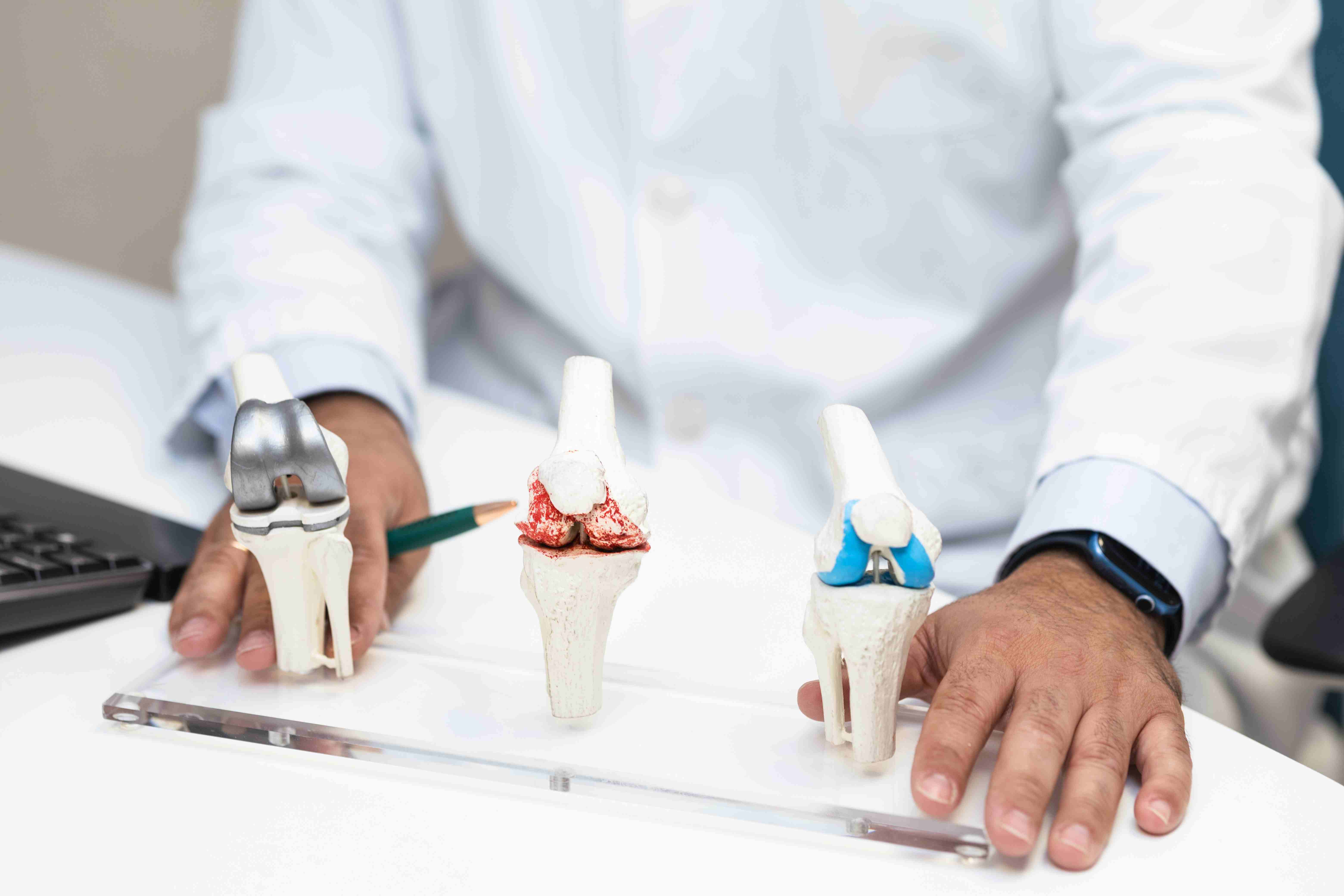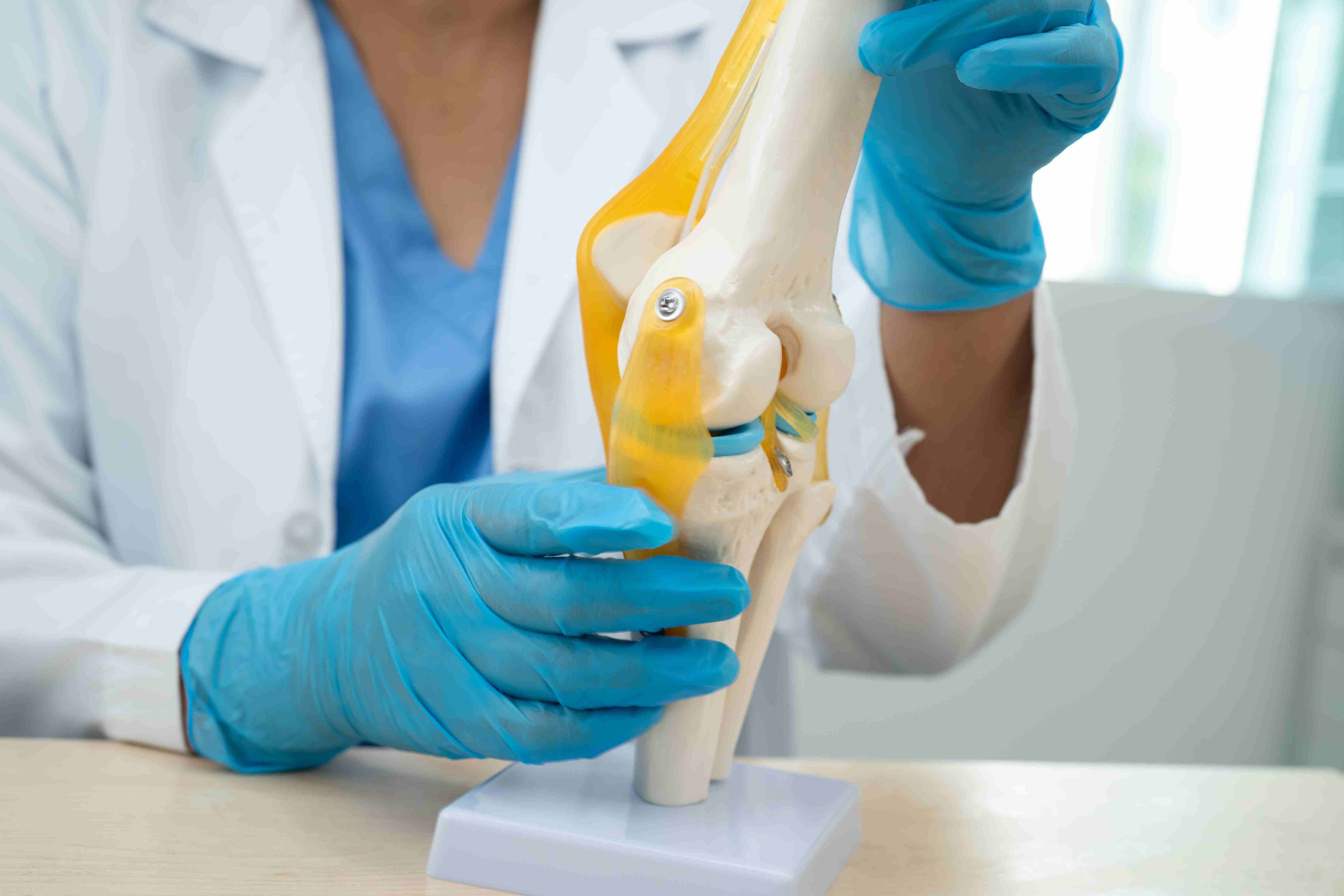Partial vs Total Knee Replacement: What’s Right for You?

Your partial vs. total knee replacement eligibility depends on factors like joint damage and overall health. Given your situation, your doctor can help determine which of the two procedures is better for you.
Are you struggling with knee pain that disrupts your life and limits your movements? Then you are probably considering a knee replacement. You go online to research and find out that there are types of knee replacement surgery. And now you are unsure which one you should get, while the pain in your knee is pinching at you for not making a decision. We understand your dilemma. So we put together a detailed guide to provide a clear, evidence-based overview of the knee replacement surgery, specifically the difference between partial and total knee replacement. Our goal is to help you understand your choices, the benefits and drawbacks of each approach, and which option may best align with your condition, goals, and lifestyle.
What is Knee Replacement?
To begin with, let us understand what exactly a knee replacement surgery is. Also referred to as Knee arthroplasty, it is the process of surgically removing damaged parts from the knee joint and replacing them with prosthetics. These prosthetics are expertly made to mimic the movements of a natural human knee. A knee replacement surgery relieves pain caused by arthritis, injury, or other reasons.
A knee replacement surgery is only recommended when you have tried medications, injections, exercise and diet control, everything there is to try and stop the chronic pain in your knee, but nothing has worked. If the pain is mild, then a knee replacement is not recommended. However, when knee pain starts interrupting your daily activities like walking, climbing stairs, or sleeping, knee surgery is recommended to relieve discomfort. If the pain and swelling make it difficult for you to bend your knees, then surgery might be the best option.
Types of knee surgery
Primarily, there are two types of knee replacement surgeries:
1. Total Knee Replacement
As the name suggests, a total knee replacement involves replacing the entire knee joint with an artificial knee. Damaged cartilage and bone are removed and replaced with metal and plastic components, restoring alignment and function across the entire joint. This is typically recommended when arthritis or joint damage is so widespread that a partial knee replacement won’t solve the issue.
Who is it for:
- Individuals who have arthritis in multiple knee joints
- Patients who are stiff, swollen, or in severe pain
- Individuals who have not responded to non-surgical therapies
Pros of Total Knee Replacement:
- Provides superior pain relief.
- Results that typically last 15 to 20+ years
- Ideal for more serious joint injuries
Cons of Total Knee Replacement:
- Longer hospital stay and surgery
- It may take three to six months to recover fully.
- Compared to your original knee, this one might feel a little less "natural."

While total knee replacement can be adequate, it’s not always the best fit. Discussing different types of knee surgery can help you explore what’s best for you.
2. Partial Knee replacement
Only the damaged part of the knee is replaced in a partial knee replacement. The healthy bone, cartilage, and ligaments are not replaced. This option is most commonly used for patients with medial compartment osteoarthritis, though lateral and patellofemoral replacements are also possible.
Who it's for:
- Patients with arthritis in just one part of the knee
- Stable knees, with a good range of motion
- Generally, younger or more active individuals with localised damage
Pros of Partial Knee replacement:
- Smaller incision and less trauma to the knee.
- Shorter hospital stay
- Faster recovery usually lasts 6 to 10 weeks
- The knee often feels more natural afterwards
Cons of Partial Knee replacement:
- Not suitable if arthritis is present in more than one area.
- You may require another surgery later if arthritis progresses.
- Fewer people qualify as candidates for this option.
Partial vs Total Knee Replacement: A Comparative Analysis
When deciding between partial and total knee replacement, it's not just about which surgery sounds simpler. It all depends on your long-term objectives and particular knee condition. Only when minimal damage is present can a partial knee replacement provide a more natural feel and a faster recovery. When arthritis affects the entire joint, total knee replacement is the more complete solution, even though it is more invasive.
While total knee replacements typically last 20 years or more, partial replacements generally last 10 to 15 years. Complete replacements are frequently the best option for patients with extreme pain and instability, even though they may require a little more time for rehabilitation.
Comparison Points of Partial vs Total Knee Replacement
Partial Knee Surgery:
- A section of the knee is treated.
- It takes six to ten weeks to recover.
- Patients are often discharged on the same day of the surgery
- It feels more like your natural knee
- The pain is largely relieved
- The implant lasts up to 10-15 years
- This surgery costs between Rs 1,50,000 and Rs 3,00,000 in India.
- PKS is best for mild damage and is restricted to one or two areas of the knee.
Total Knee Surgery:
- The entire knee joint is replaced with the implant
- Recovery takes anywhere from 3 to 6 months
- Patients are often discharged after 1-3 days of the surgery
- The knee feels more mechanical than natural
- The pain is completely relieved
- The implant usually lasts up to 20 years. It could last longer depending on the care provided.
- The cost of this surgery in India is between Rs 2,00,000 and Rs 5,50,000 per knee.
- TKS is best for when the damage is moderate to severe and affecting the complete knee joint
Which one are you eligible for?
Whether you should get a total knee replacement or a partial knee replacement depends on several factors. To begin with, your surgeon will look for answers to the following questions:
- The extent and location of the damage to your joints.
- How stable and healthy are your ligaments?
- Your age, way of life, and degree of activity
- What do you hope to accomplish following surgery?
Depending on the answers, they will determine which surgery you are eligible for.

A medical professional discusses bone structure to help the patient understand the differences between partial and total knee replacement.
You might be a good candidate for partial knee replacement if:
- Only one area of your knee is affected
- You have a good range of motion
- Your ligaments are intact
- You want a minimal procedure with quick recovery
You might be a good candidate for total knee replacement if:
- You have arthritis in more than one area of your knee joint
- Your knee is stiff, swollen, or unstable.
- You require pain relief and long-term reliability.
- You’ve tried other treatments with no lasting success.
Conclusion
It can be challenging to decide between partial and total knee replacement. However, it need not be. Both procedures successfully provide long-lasting relief and enable you to resume an active, pain-free lifestyle. We hope this guide helped you understand total and partial knee replacement surgery's differences, advantages, and disadvantages.